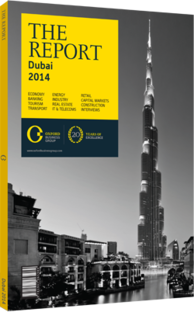OBG talks to Peter Baltussen, CEO, Commercial Bank of Dubai

Interview: Peter Baltussen
How is the rapid turnaround in the corporate lending market and subsequent influx of competition expected to affect the sector’s profitability?
PETER BALTUSSEN: The risk premiums that were observed post-crisis are being broken down as corporate credit ratings improve, arguably a bit quicker than expected. Nonetheless, spreads today still remain higher compared to 2008. Increased lending activity will not translate directly into net profit growth as higher revenues will be partly consumed by lower yields. As we saw with the rebound in the US market, when momentum turns it does so very quickly. The UAE has certainly been no exception, as can be seen by the changes in real estate prices and loan spreads which were first triggered in mid-2012.
Amidst a backdrop of an improving macro environment in the UAE, to what extent does asset quality among banks remain an issue of concern?
BALTUSSEN: Four years after the financial crisis, UAE banks are averaging approximate capital adequacy ratios of 20%, very healthy liquidity ratios and a significant increase in provision levels. Much of this is attributable to the proactive approach taken by regulators. Although average non-performing loan (NPL) ratios among Dubai banks do currently stand at approximately 12%, high compared to some other markets, one must equally consider the coverage ratios in Dubai. On average about 80% of NPLs held by local banks are provisioned, whereas this ratio is less than 50% in many other markets. This is partly because banks in Dubai are very profitable and maintain cost-to-income ratios of around 30%, whereas averages in Europe are closer to 60%. Due to their higher profitability and efficiency, local lending institutions are able to channel a larger part of profits towards loan-loss provisions without sacrificing performance.
Growth in NPLs over the past year has slowed in the UAE. We believe they will top off by early 2014 and then begin a downward trajectory. As the local economy rebounds we expect to see less bad loan provisions. It is likely 2013 will be the last year of this cycle in which significant provisions will be seen among local banks. This means 2014 could see a positive impact on net profitability as well as an encouraging increase in write backs on problem assets.
The UAE is drafting new legislation on mortgages. In what ways could this affect lending?
BALTUSSEN: The ongoing mortgage discussion is important given the UAE’s distinct demographics. Many expatriates typically only live in the country for an average of three to five years. So the issue at hand becomes focused around how banks can provide a 25-year mortgage to borrowers likely to leave the country 20% into the tenure of the loan. Therefore, a regulatory distinction between foreigners and locals is understandable. That said, the new rules on mortgages for first property purchases over Dh5m ($1.36m) limiting UAE nationals to a 70% loan-to-value (LTV) ratio and 65% for expatriates could be too conservative. Many believe the new limits should be slightly more lenient, particularly for locals.
There are also requests for the debt burden of individuals to hold just as much, if not greater, weight than the LTV ratio. In any case, establishing tighter rules is welcomed, as this would offer better protections for both banks and consumers. It is also worth noting that most real estate transactions in the UAE are presently based on equity rather than lending, with some estimates of the country's entire mortgage portfolio not exceeding Dh70bn ($19bn). Therefore, the other side of the loan portfolio, dealing with real estate-related corporate lending, is arguably of even greater importance. This is being closely monitored by the central bank. In the long term, it will be particularly important that concerned parties do not underestimate how momentous real estate-related lending is for the well-being of the Dubai economy, while simultaneously continuing to support prudent policy development.
You have reached the limit of premium articles you can view for free.
Choose from the options below to purchase print or digital editions of our Reports. You can also purchase a website subscription giving you unlimited access to all of our Reports online for 12 months.
If you have already purchased this Report or have a website subscription, please login to continue.

